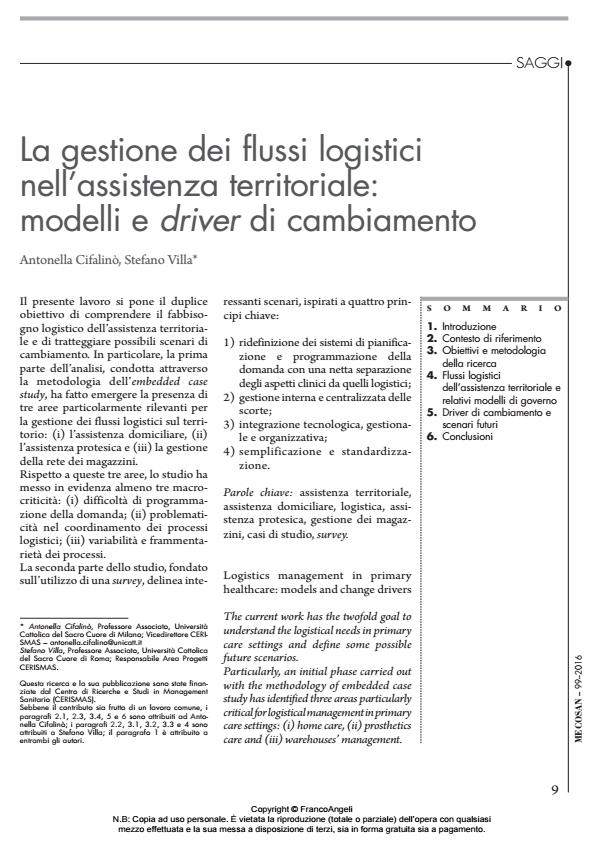Logistics management in primary healthcare: models and change drivers
Journal title MECOSAN
Author/s Antonella Cifalinò, Stefano Villa
Publishing Year 2017 Issue 2016/99
Language Italian Pages 34 P. 9-42 File size 24128 KB
DOI 10.3280/MESA2016-099002
DOI is like a bar code for intellectual property: to have more infomation
click here
Below, you can see the article first page
If you want to buy this article in PDF format, you can do it, following the instructions to buy download credits

FrancoAngeli is member of Publishers International Linking Association, Inc (PILA), a not-for-profit association which run the CrossRef service enabling links to and from online scholarly content.
The current work has the twofold goal to understand the logistical needs in primary care settings and define some possible future scenarios. Particularly, an initial phase carried out with the methodology of embedded case study has identified three areas particularly critical for logistical management in primary care settings: (i) home care, (ii) prosthetics care and (iii) warehouses’ management. The study has identified three macro critical areas: (i) difficulties in scheduling and capacity planning; (ii) lack of coordination of the different logistical flows; (iii) processes highly variable and fragmented. A survey analysis identifies some interesting scenarios inspired to four key principles: 1) redefinition of the scheduling systems with a strong separation between clinical aspects and logistical aspects; 2) internal and centralized management of supplies; 3) integration at technological, managerial, and organizational level; 4) simplification and standardization.
Keywords: Logistics, primary care, home care, prosthetics care, warehouse management, case studies, survey.
- Operations management delle cure primarie: quali standard di servizio per servire l'intera popolazione cronica? Angelica Zazzera, Francesco Longo, in MECOSAN 108/2019 pp.55
DOI: 10.3280/MESA2018-108004 - More Means Worse. Asymmetric Information, Spatial Displacement and Sustainable Heritage Tourism Silvia Caserta, Antonio P. Russo, in SSRN Electronic Journal /2001
DOI: 10.2139/ssrn.274728
Antonella Cifalinò, Stefano Villa, La gestione dei flussi logistici nell’assistenza territoriale: modelli e driver di cambiamento in "MECOSAN" 99/2016, pp 9-42, DOI: 10.3280/MESA2016-099002